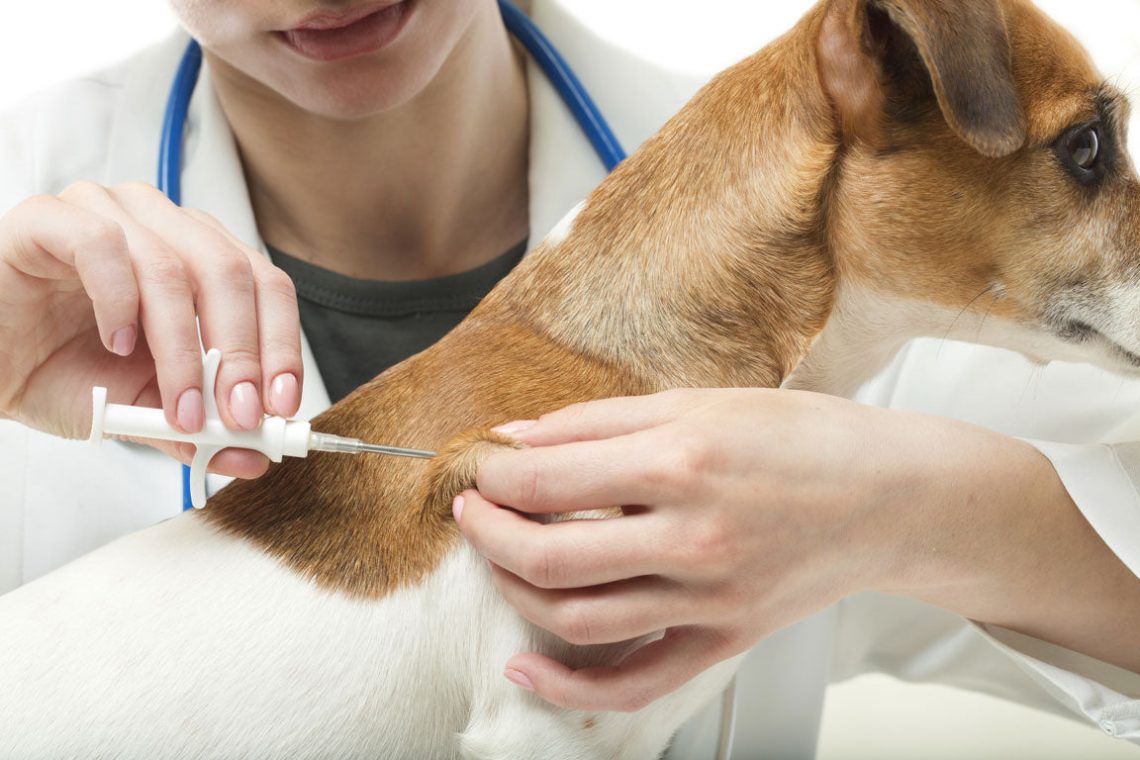
Chipping dogs and cats: what is it for and what is there with radiation
Full FAQ from veterinarian Lyudmila Vashchenko.
Chipping of pets is perceived by many with distrust. Usually the reason is a misunderstanding: what the chip is for, how it is implanted, and what these strange things are generally made of. Let’s dispel the myths and pay attention to the non-obvious aspects of chipping.
A chip is a device that consists of a copper coil and a microcircuit. The chip is placed in a sterile, tiny biocompatible glass capsule, so the risk of rejection or allergy is negligible. The design itself is about the size of a grain of rice – only 2 x 13 mm, so the pet will not experience discomfort. The chip is so tiny that it is injected into the body with a disposable syringe.
The chip stores the basic data about the pet and its owner: the owner’s name and contacts, the pet’s name, gender, breed, vaccination date. This is quite enough for identification.
To keep abreast of the location of the pet, you can additionally introduce a GPS beacon to the chip. It is advisable to put it if the pet is of breeding value or can run away from home.
Let’s immediately dispel popular myths: the chip does not transmit electromagnetic waves, it does not emit radiation, and it does not provoke oncology. The device is not active until a special scanner interacts with it. At the time of reading, the chip will create a very weak electromagnetic field, which does not affect the health of your pet in any way. The service life of the microcircuit is 25 years.
It’s up to each owner to decide. Chipping has many advantages that have already been appreciated in European countries:
A chipped pet is easier to find if it gets lost or stolen.
Information from the chips is read by veterinary clinics with modern equipment. You do not have to carry a bunch of papers with you for every pet appointment.
The chip, unlike the veterinary passport and other documents, cannot be lost. The pet will not be able to reach the chip with its teeth or paws and damage the implantation site, since the microcircuit is placed at the withers.
With a chip, your dog or cat will not be able to be used in competitions by unscrupulous people or replaced with another pet. This is especially important if your dog or cat is of breeding value and participates in exhibitions.
Without a chip, you will not be allowed to enter every country with your pet. For example, the countries of the European Union, the USA, the UAE, Cyprus, Israel, the Maldives, Georgia, Japan and other states allow only pets with a chip to enter. The information in the veterinary passport and pedigree must be identical to that in the chip database.
The real disadvantages of the procedure are much less than fantasy draws. We only counted two. Firstly, the implementation of the microcircuit is paid. Secondly, usually pets are stressed due to the manipulation of syringes. That’s all.
The implantation of the chip is very fast. The cat or dog does not even have time to understand how this happened. The procedure is very similar to conventional vaccination.
The chip is injected with a special sterile syringe subcutaneously in the area of the shoulder blades. After that, the veterinarian puts a mark on the procedure in the veterinary passport of a cat or dog and scans the data about the pet into an electronic database. Ready!
After entering the microcircuit, the pet will not experience any inconvenience from the presence of a foreign body inside. Just imagine: even tiny mice are microchipped.
Before implanting the microcircuit, the dog or cat must be checked for the presence of diseases. The pet should not have weakened immunity either before or after the procedure. If he is ill, microchipping will be canceled until he fully recovers.
Chipization is possible at any age of your pet, even if he is still a kitten or puppy. The main thing is that he was clinically healthy.
The price depends on the brand of the microcircuit, its type and the region of the procedure. It also matters where the chipping was done – at the clinic or at your home. Departure of a specialist at home will cost more, but you can save time and save your pet’s nerves.
On average, the procedure costs about 2 thousand rubles. It includes the work of a veterinarian and registration in the pet information database. Depending on the city, the price may vary.
State Duma deputy Vladimir Burmatov announced the government’s plans to oblige Russian citizens to mark cats and dogs. The parliamentarian stressed the need to take into account: in our country, too many pets end up on the street through the fault of irresponsible people. And the marking will allow you to find the owners. So runaway or lost pets will have a chance to return home. However, during the second reading of the bill, these amendments were rejected.
Thus, in Russia they will not yet oblige citizens to label and chip pets at the legislative level. This remains a voluntary initiative, but we encourage you to do so. If you have any questions or concerns, please consult your veterinarian.





